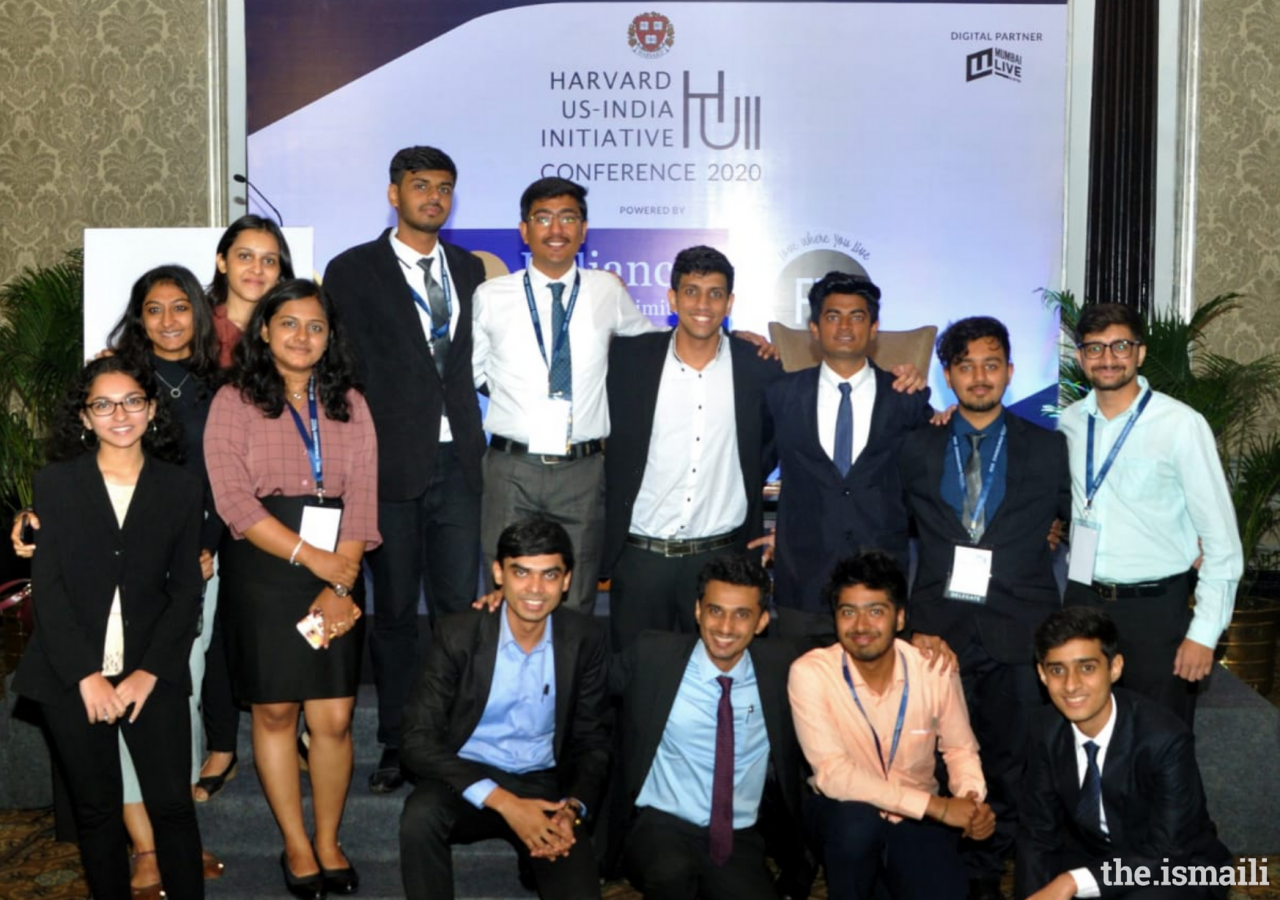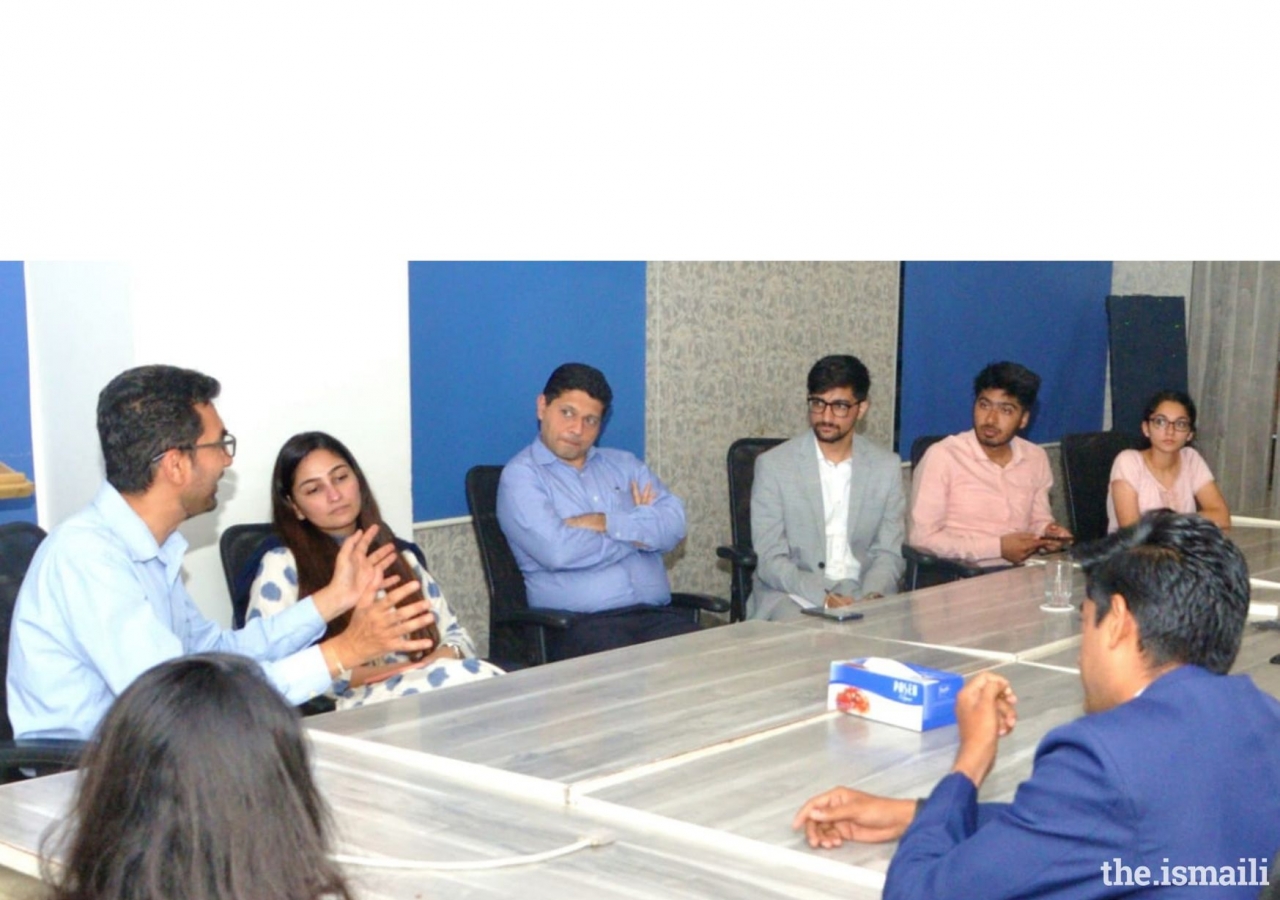It was the familiar large sidewalk on Mumbai’s Marine drive and the air was a little chilly. Slowly, a group of people began to assemble. A meet-greet was taking place and in no time at all, the sidewalk had two hundred people. This was the preamble to the Harvard U.S. India Initiative conference (HUII). Organized independently as Harvard’s signature conference in India, this two-day event, hosted at the Taj Mahal Palace Hotel in Mumbai, brought together speakers from business, industry, politics and the arts. Placing at the event was no mean feat. This year, HUII had a whopping applicant pool of 4,500 students, with an acceptance rate of a mere 10%. Among those who made it to the coveted 450, were a group of my peers from the Reach for the Stars (RFS) Mentorship Programme. The story of how we found ourselves at a conference of this caliber, is one that is worth telling.
Reach for the Stars (RFS) is a flagship mentoring programme, run by the Aga Khan Education Board for India (AKEB,I). Each year, the programme selects a small cohort of 60 students and pairs them with a mentor from their field of interest. Those sixty coveted seats are highly regarded, as every student’s journey is curated, and customized to their individual goals and initiatives. It is on this closed group that a message echoed about the conference, and these students, high in both dynamism and spirit, immediately took up the opportunity to apply.
“I read through these applications, carefully reviewing the content and making sure I had diversity, but more importantly, that the application had a story to tell. It was the largest applicant pool we have ever had”, says Dravisha Katoch, Director of the Organizing Committee at HUII. “It is wonderful to see an entire community of students being mentored to apply here and place, it gives us insight into just how important community-specific endeavors are”, she praised.
For those who made it, the application process was far from easy. From broader questions like ‘What do you, as a delegate, bring to the conference’, to the more targeted ones, for instance, ‘In grappling with its dramatically changing landscape, what is the most formidable challenge you expect India to face in the coming years?’: each of these questions required a high level of introspection, conviction and political know-how to address them. That’s where the RFS team stepped in.
Those who applied and placed at HUII had the advantage of seeking guidance and advice from their pool of mentors on the RFS programme. “At first glance, cracking the application seemed impossible. It was only because of the invaluable guidance of the RFS team that I was able to seize this unique opportunity”, insisted Sahil Kadiwar, an RFS participant. “It wasn’t just the conference itself, but the application process, the essays and the introspection that I will reminisce about”, he continued.
For those who placed, the tireless process of application reviews was worth it. The two days of the conference saw a range of keynote speakers including, Justice Madan Lokur,former judge at the Supreme Court of India and builder extraordinaire, Mr. Niranjan Hiranandani, among others. Through panel discussions, interspersed with coffee and lunch breaks, the participants engaged in discussion and debate around each panel’s agenda. The diversity of the speakers was mirrored in the audience. The delegates who made it to HUII included engineers, lawyers, architects and those in the creative arts. The participant pool itself was inspiring. I recall for example, meeting a young 23-year old delegate, with three funded startups, one of which helped street vendors with ‘smart carts’, and another that helped school students better understand their subjects of study through 3D printing. Indeed, networking at the conference was as important as the panel discussions themselves; and that’s another thing that RFS prepared us well for. When I reflect on day one of my RFS orientation programme, I remember the team’s advice to us: “make connections, but more importantly, make friends, and stay in touch”. The advice and the constant practice of networking at RFS, made it easy for us to navigate the HUII conference.
At the end of the two days, as we headed back on the bus, we did what the RFS programme had coached us well, to do. We scrolled through our contact list, sending a “thank you, catch-up soon” message to those we had met, setting in motion, a wider effort to build our own peer networks.
It is after all this network that will open opportunities for the next batch of RFS students who want to place at similar events and conferences. Given the investment that is made in them, RFS alumni are keen to pay it forward. “I’d like to give back to RFS”, says one of the group. “It has been an experience that has contributed to shaping me as an individual”, as the others nod in agreement.
For the AKEB,I Chairman, Aslam Hirani, this spirit of giving-back is a clear strength of the programme. “Building global partnerships, curation of inter-disciplinary growth, and impact on society, are largely, the three main facets of the RFS programme’s objectives. And these students are a manifestation of the impact it has had”, says Chairman Aslam. He and his team took the opportunity to meet with the HUII delegates from the Jamat, after the conference concluded. With a little bit of help from the team and their peers, the next group of RFS students, will continue to see powerful opportunities open for them in the future.









